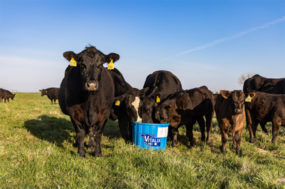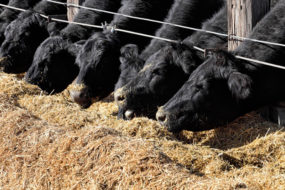Cattle ranchers would argue that rainfall is badly needed to improve their pastures, but heavy rains could devastate the 196,000-acre cotton crop in the four-county Valley area, Cowan said.
“It’s a crop at risk,” he said. “The first thing rains would do at this point is keep harvesting machines out of the fields. You can’t run a picker in the mud. The cotton has to be dry.”
Aside from disrupting the ongoing harvest, rains on open cotton bolls could destroy them or decrease their value, depending on rainfall amounts, Cowan said.
“A heavy rain with high winds could ruin the crop by knocking bolls to the ground,” he said. “Harvesting machines can’t pick cotton up off the ground. That kind of weather could also string out the lint to the ground, splash it with dirty water or stain it with moist leaves.”
Cotton growers are paid based on weight and lint quality, Cowan said.
Growers in the Coastal Bend area of Texas need about 10 more days to complete their harvest, according to Jeffrey Stapper, AgriLife Extension agent in Nueces County.
“We’ve harvested about 60 percent of the 130,000-plus acres we have this year in Nueces County,” he said. “Rain would not be welcomed by cotton producers this weekend. Yields have been good considering the dry growing season we have had. We’re just hoping to be able to get the rest harvested before the rain comes.”
Other crops are also at risk in the Rio Grande Valley, Cowan said. “We also still have some grain sorghum, corn and soybeans out in the field that would be at risk, but the majority of those crops have already been harvested. Cotton harvesting, though, is just now hitting its stride,” he said.
Other Valley producers who would benefit from a tropical weather-maker would be sugarcane and citrus growers.
“Those crops are harvested later in the year, so they would actually benefit from a good rain, but it’s too late for cotton, which didn’t get the timely rain it needed to make a bumper crop.”
Long-term, normal cotton production for Rio Grande Valley producers is generally one bale per acre on dryland farms and two bales on irrigated land.
“Several days of soaking rains in early July helped the crop, but it’s too bad we’re not getting higher yields because cotton market prices have generally held strong,” Cowan said.
Growers had planted more cotton this year hoping to cash in.
“They planted twice as much cotton as they did last year because of higher market prices, but here we are again, battling with Mother Nature just to get a good crop into the barn,” he said.
“We’re hoping it sideswipes us or makes landfall farther north.” 








